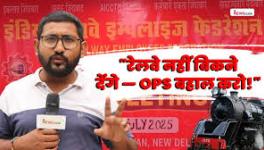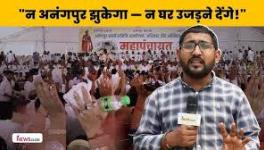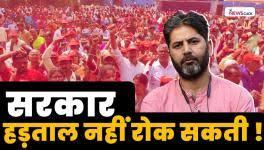Why Creating North Bengal as a Separate State is Not Feasible

North Bengal tea gardens. (File photo)
The demand for creating a separate state of North Bengal has been raised time and again. North Bengal consists of the present districts of Malda, Uttar Dinajpur, Dakshin Dinajpur, Darjeeling, Jalpaiguri, Alipurduar and Cooch Behar. These are areas far away from West Bengal’s capital city, Kolkata, the economic and political hub of the state.
The region has its own natural resources in terms of hills, Duars (terai regions) and plains and rivers that are torrential during the monsoon and near-dry toward the close of summer. Excessive rainfall contributing to the exuberant growth of vegetation and forest trees, and undulations have helped the growth of tea gardens in the hills and the Duars.
Archibald Campbell, the British administrator, known for his love for Darjeeling, brought China tea seeds from the Kumaon region in 1841 and started growing tea which gradually led to the spread of tea estates, now about 250 in number in the area.
The tea gardens have now extended to the plains as small tea gardens on land where paddy and jute was grown earlier. The natural beauty of North Bengal’s hills, tea gardens and forests have led to the growth of a flourishing tourism industry in the region. Home-stays have become quite popular in recent years. North Bengal is thus famous for the four T's- Tea, Timber, Tourism and Trade.
As for the demographic composition, people belonging to all the four language families, namely, Austric, Tibeto-Chinese, Dravidian and Indo-European, belonging to various ethnic groups, namely, Nepali (Gorkha), Bhutanese, Tamang, Lepcha, Limboo, Mech, Rabha, Oraon, Munda, Santhal, Malpahari, Kharia, Madhesia, Jugi, Khen, Pan, Palia, Deshi, Nasya Sekh (Rajbanshi converted Muslims) etc. reside in the region. Of course, the Rajbanshis from the Mongoloid group, are the single largest group. Such is the diversity possessed by North Bengal, and naturally it fascinates all classes of people.
There are diversities in the political arena too. The political history of Darjeeling is intertwined with the history of Bengal, Nepal, Bhutan, Sikkim and British East India Company. By the Treaty of Sugauli in 1815, Nepal ceded 4,000 sq. miles of its territory to British India, which handed over the land to the Rajah of Sikkim by the Treaty of Titlya in 1817. Sikkim was then made a buffer state between Nepal and Bhutan.
The Sikkimputtee Rajah granted lease of 'all the land south of the Great Rungeet river, east of the Balasur, Kahail and Little Rungeet rivers and west of the Rungno and Mahanadi rivers', on February 1, 1835. But consequent upon troubles, such as the arrest of Campbell and other Britishers touring in the area and further “misconduct” on Sikkimese part, the region was made a part of the British Indian Empire, and the kingdom of Sikkim was made a protected state.
The Darjeeling municipality was established way back in 1850. The district, formed with the hill sub-divisions of Darjeeling, Kurseong, Kalimpong and Siliguri sub-division in the terai, was merged with the state of West Bengal in 1947. After that the district faced some demographic changes due to the influx of thousands of Tibetan refugees, consequent to the annexure of Tibet by the People's Republic of China in 1950. Large-scale immigration from Nepal was a natural phenomenon during the British rule. All these contributed to make Darjeeling’s identity a very complex -- ethnically, socially, economically and politically. A diverse ethnic population also gave rise to socio-economic-political tensions quite often.
The eastern part of North Bengal, namely Cooch Behar, is associated with the ancient history of Pragjyotishpur and Kamrup, having its own cultural history, anthropological and linguistic characteristics. Bhagadatta, the famous king of Kamrup is claimed to have participated in the battle of Kurukshetra in the Mahabharata era. Vaskarvarman, the 7th century king of Kamrup, who was a contemporary of Harshavardhana of Kanauj and Shashanka of Bengal, ruled over the entire Brahmaputra valley of Assam extended up to Karatoa river in North Bengal. Hieu-en-Tsang, the Chinese traveller, happened to visit Vaskaravarman's kingdom and left very significant comments about its people and language. The region was under the Bhuinyas for some time.
Biswa Singha of the Koch-Rajbanshi dynasty occupied the territories under different Bhuinyas and consolidated it as a kingdom in 1515. The kings of this dynasty ruled over this kingdom by the name Cooch Behar estate, which was the biggest princely state in eastern India, till 1949, when the state was merged with the Dominion of India.
It is well known that the Ministry of States headed by Sardar Vallabh Bhai Patel and V. P. Menon, who was secretary in the Ministry, were engaged in continuous negotiations with the Princes and Nawabs (numbering around 580) to bring them into the Dominion. The Maharaja of Cooch Behar signed the Instrument of Accession on August 9, 1947 and the merger agreement on August 28, 1949 when the state was made Chief Commissioner's Province. Then it was decided to merge Cooch Behar with West Bengal as a district.
The loyal subjects, descendants and relatives of the kingdom were frustrated and expressed their unhappiness, discontent, angst and grievances in various ways. This was more so because of the lack of a comprehensive plan for the development of the region with indigenous people, the attitude of the administration and Kolkata-based leaders toward them.
The huge number of people coming from East Bengal/Bangladesh settled in the region became their competitors in the paltry resources and sources of income. All these caused a general feeling of deprivation and exploitation, and the region saw the first outburst in the form of the Uttar Khanda movement in the 1970s. The movement initially concentrated on the socio-economic-political uplift of North Bengal, such as non-implementation of the Teesta project. The state government paid hardly any attention and the movement strengthened and gradually shifted its demand, seeking a separate state of North Bengal.
Then, in the 1980s, came the Uttar Banga Tapashili Jati-o-Adibasi Sangathan (UTJAS), a students’ organisation of North Bengal University, fighting mainly on the issues of proper implementation of reservations for Scheduled castes and Scheduled Tribes, and increasing the land ceiling. Confronted with various punitive government actions and also because of disputes among the leaders on various points, this movement had a very short life.
However, it was the Kamtapur People's Party (KPP), formed in 1995, which provided a new turn to regional politics. KPP came out with the demand for a separate Kamtapur state along with the recognition of the Kamtapuri language. With a view to achieving this, KPP brought the history of Kamtapur state and Kamtapuri language to the forefront and demanded that the spoken language of the Rajbanshis, the indigenous people of North Bengal, be known as Kamtapuri, not Rajbanshi.
It was also claimed that Kamtapuri was not a variant of Bengali, rather it was a separate language. But the Kolkata-based South Bengal writers and litterateurs have quite often made objectionable and often offensive comments about the ethnic identity of the Rajbanshis, their language and culture. It was further claimed that Rajbanshis were not Bangalis.
Armed with an extremist wing, known as the Kamtapur Liberation Organisation (KLO), KPP and KLO resorted to extremist subversive activities on many occasions. The result was that the movement has been labeled as secessionist and separatist by the state government. Because of the activities of the KLO, supported by All Assam Students Union and the All Bodo Students Union of Assam, KPP suffered a major setback after the large-scale arrests of KPP members and KLO activists. KLO was declared as a banned organisation and its cadres fled to Assam, Bhutan and Bangladesh.
Jiban Singha, the head of KLO is said to have hidden in Bangladesh. Reportedly frustrated and bewildered, Mitali Roy, one of KLO’s principal women activists joined Trinamool Congress (TMC) with her followers and became an MLA from Dhupguri in 2016. Atul Roy, the main leader of KPP, joined hands with TMC later. With the death of Atul Roy in June 2021, KPP is now a non-functional entity.
Of late, the Akhil Bharatiya Adibasi Bikash Parishad has begun some activity in the tea garden areas of terai-Duars to highlight the grievances and problems of tribal people. Their activities, however, have not cut much ice in the face of the role of political parties and trade unions in the gardens.
North Bengal faced another movement -- the Greater Kuch Bihar movement that originated in 1998. The Greater Kuch Bihar People's Association was initially formed by the descendants of Cooch Behar’s Raj family with the demands principally related to issues connected with the accession of Cooch Behar to the Dominion of India and its merger with West Bengal as a district.
Recall that it was the Maharaja of Cooch Behar who had signed the Instrument of Accession on August 9, 1947 and the Merger Agreement on August 28, 1949. The Agreement contained 9 Articles and Article 1 reads: "His Highness the Maharaja of Cooch Behar hereby cedes to the Dominion Government full and exclusive authority, jurisdiction and power for and in relation to the Governance of the State and agrees to transfer the administration of the State to the Dominion Government on the 12th day of September, 1949. ……And from the said day, the Dominion Government will be competent to exercise the said power, authority and jurisdiction in such manner and through such agency as it may think fit."
The other Articles were to various privileges and entitlements of the Maharaja, his family and employees of the state. The Greater Kuch Bihar People's Association raised various questions about the agreement and imputed various intentions of the Union and state governments. They claimed that former Chief Minister Bidhan Chandra Roy got the state merged with West Bengal by force.
Also, Cooch Behar was mistaken by the Association as a 'C'-category state. They claimed, without any basis, that the Agreement contained commitment and assurances about the history, literature, culture, education, health, food, shelter of the Cooch Behar people. By dint of false publicity to this effect through pamphlets, leaflets and meetings, they exploited the emotions and sentiments of the local people and even resorted to violence, creating a major disturbance in the area. Banshi Badan Roy and few others of one of the wings of the Association were arrested. But Nagendra Nath Roy, nick-named Ananta Maharaj, the self-styled maharaja, who is actually a group-D employee of a Central government undertaking stationed in Assam, escaped to Assam.
It is said that Ananta Maharaj, from meetings organised at various places of Cooch Behar and lower Assam, collected huge amounts of money by exploiting the people's sentiments, allegedly for construction of a palace to be used for common indigenous people. He has actually constructed a palace-like building, rather a fort at Chokchoka, Cooch Behar, which is used as his residence and where reportedly nobody is allowed to enter without permission.
Banshi Badan Roy, after his release from jail, has joined hands with TMC. Nagendra Nath Ray has become a BJP Rajya Sabha member. The movement has almost reached its end.
Such movements could hardly make any impact in the region, except for the Gorkhaland movement under the leadership of Subash Ghisingh, who could muster sufficient strength by organising the hill people by raising their sentiments about the uniqueness of their history, geography, language and culture and also their “deprivation and exploitation” by the Kolkata-based administration. He could at least achieve an autonomous body for the fulfilment of hopes and aspirations of the hill people.
Ghisingh’s successors, namely, Bimal Gurung, Benoy Tamang and their followers, did not achieve much except for an occasional cry for Gorkhaland. But, such a concept of a North Bengal state is not at all feasible. The demands of various movements vary and there has been no coordination and comprehensive common action points for achieving any common object. There are other reasons too.
Why should Dinajpur and Malda districts accept Gorkhaland or Kamtapur or Greater Cooch Behar when they have their own glorious past -- Barendrabhumi for Dinajpur and Gaur for Malda? People of this area hardly nurse any emotional feelings about the so-called Gorkhaland, Kamtapur and so on. People of Dinajpur are proud of their past glories of Poundrabardhan, Barendrabhumi, and Bangarh. Also they feel proud of their Gaur connections, Lakshanabati being related to Gaur.
For the people of Malda, of course, it is Gaur, which was once the capital of Bengal. They are proud of the Pal and Sen dynasties, Hussain Shah and the great protagonist of world's Bhakti movement, Sri Chaitanya Deva.
If this is so, how come a voice, though feeble, is being heard for the creation of such a state time and again? To my mind, this is simply a game plan being pushed by the Bharatiya Janata Party and TMC, two political parties with extreme Brahminic values. The former faced a big setback in the recent Lok Sabha elections in West Bengal, and is said to have had a “mischievous” objective of creating trouble for the West Bengal government. In the past this was done by John Barla, the then BJP MP from Alipurduar, belonging to the Munda tribe. The BJP has been trying to woo the Rajbanshis for some time by giving them false promises on various issues, including recognition of Kamtapuri language, in the same way the party keeps on promising Gorkhaland to the Gorkhas and winning the Darjeeling parliamentary constituency.
Union Home Minister Amit Shah reportedly met Ananta Maharaj in course of his Assam visit and has now made him a BJP Rajya Sabha MP, who has once again demanded a Greater Kuch Bihar State. Sukanta Majumdar, BJP’s MP from Balurghat and a junior Union minister, has proposed the tagging of North Bengal districts with the North Eastern Council so that they get more funds. Jayanta Ray, BJP MP from Jalpaiguri, has supported him. They have done this without knowledge of the subject.
The most ridiculous proposal has been initiated by Nishikant Dubey, BJP’s MP from Bihar’s Godda, supported by party leaders from Murshidabad, to create a Union Territory with Malda and Murshidabad, two districts of West Bengal, and Kishanganj, Araria, Katihar and Purnea of Bihar, in consideration of their demographic characteristics in terms of the Muslim population. The proposal is to put the area under the administrative control of the Central government with a view to checking infiltration and demographic changes. This is just an extension of BJP’s rhetoric ‘Hindu khatre me hain’ (Hindus are in danger).
Do these BJP leaders have any idea about growth of Muslim population over time in these districts? Moreover, don’t they think that infiltration should have been checked and controlled by Border Security Force, a Central force? All such arguments are irrelevant, as the BJP’s main objective is to create a division among common people in the name of religion.
As mentioned earlier, the TMC, under the leadership of Mamata Banerjee, has also played a double game. In fact, Banerjee has been more instrumental in giving encouragement to all the three forces demanding separate state --- Gorkhas, Kamtapur-walas and Greater Kuch Bihar-walas. While the BJP-RSS provide verbal instigative comments, Banerjee put things in action. She agreed to insert the term ‘Gorkhaland’ in the agreement and administrative organ and replaced Darjeeling Gorkha Hill Council by ‘Gorkhaland Territorial Administration Sabha’ and included therein 18 mouzas of Siliguri sub-division immediately after coming to power in 2011.
As mentioned above, leaders of the Kamtapur movement had been clamouring for a Kamtapur state since the 1990s. Banerjee graced a meeting of the KPP held in Cooch Behar’s Ras Mela ground on April 25, 2017. She also created a Kamtapuri Bhasa Academy in 2017.
A virtually non-existent Kamtapuri language, an import of a very small section of Rajbanshis, was included in the list of official languages, violating the provisions of Articles 345 subject to 346 and 347 of the Constitution. The special provision for making a spoken language an official language says that the President may, ……………….. “direct that such language shall also be officially recognized throughout that State or any part thereof for such purpose as he may specify.”
The TMC government cared little for this constitutional provision. While replying to the debates in the Official Language Bill on February 28, 2018, Banerjee asserted that both Rajbanshi and Kamtapuri would exist, with the statement, ‘I respect Rajbanshi bhasa, I respect Kamtapuri bhasa too.’ This way, she extended support to the Kamtapur-walas who have been demanding separate state and division of Bengal. Not that they have ceased the demand. KLO leader Jiban Singha and his followers have oft repeated the demand. Banerjee has been accused of igniting the flame for division of Bengal, apparently to create a division among the Rajbanshis, particularly the intellectual section among them.
As stated earlier, Banerjee joined hands with Banshi Badan Ray and was trying to woo Nagendra Nath Ray, the Greater Kuch Bihar leaders. Not surprisingly both of them are still raising the demand for a separate Kuch Bihar state or Union territory. Did Banerjee do all this to simply fetch votes? The average Bengali and even the intellectual ones appear to have bothered little over such questionable moves by Banerjee, who is projected as the ‘pride of Bengal and Bengalis’.
At present, the TMC is bent on showing its mettle both in and outside the Assembly against the splinter voices of BJP on the division of Bengal. The matter is best left to the judgement of the people of Bengal -- should they raise their voices or simply enjoy the fun? Let us wait and watch.
Dr. Sukhbilas Barma is a retired IAS officer and the editor of the Socio-Political Movements in North Bengal-Volume 1 and 2. The views are personal.
Get the latest reports & analysis with people's perspective on Protests, movements & deep analytical videos, discussions of the current affairs in your Telegram app. Subscribe to NewsClick's Telegram channel & get Real-Time updates on stories, as they get published on our website.
























